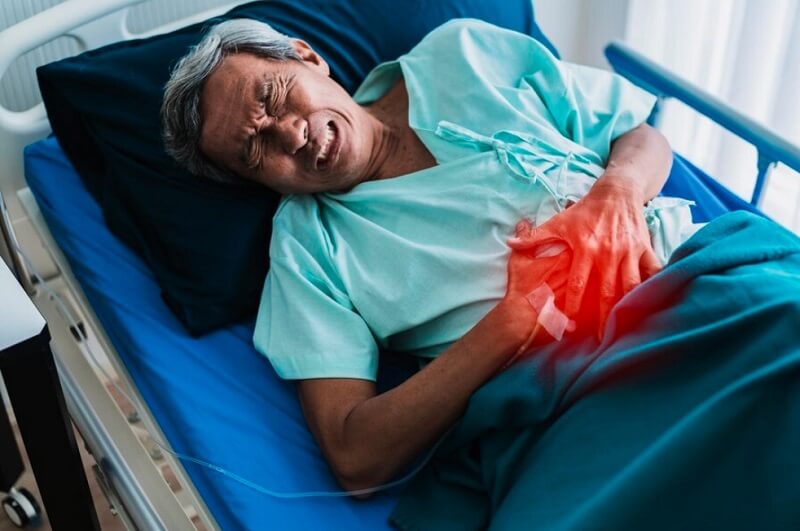Helicobacter pylori, a spiral-shaped bacterium that colonizes the human stomach, has emerged as a significant concern in the medical community due to its potential to cause cancer. Affecting nearly half of the world’s population, H. pylori infection poses a complex challenge to healthcare professionals and researchers alike.
While most infected individuals remain asymptomatic, the bacterium is a known risk factor for various gastric diseases, including cancer. The question of how long it takes for H. pylori to cause cancer is not straightforward, involving a multitude of factors that influence the progression from initial infection to malignancy.
This article delves into the intricate relationship between H. pylori and cancer development, exploring the timeline, associated risk factors, and current prevention strategies in this critical area of gastroenterology.
H. pylori and Its Associated Cancers
H. pylori infection is primarily associated with two types of cancer:
Gastric Adenocarcinoma
This is the most common form of stomach cancer, specifically non-cardia gastric adenocarcinoma, which develops in the main body of the stomach. Studies have shown that H. pylori is linked to an astounding 89% of these cases, making it the most significant known risk factor for this type of cancer.
Gastric Mucosa-Associated Lymphoid Tissue (MALT) Lymphoma
This is a type of non-Hodgkin lymphoma that develops in the stomach’s mucosa. H. pylori is implicated in 92% to 98% of gastric MALT lymphoma cases, underlining its critical role in the pathogenesis of this malignancy.
The Path from Infection to Cancer
The progression from H. pylori infection to cancer is a gradual process that typically unfolds over many years or even decades. This progression follows a series of well-defined stages:
- Initial Infection: H. pylori colonizes the stomach, adhering to the epithelial cells of the gastric mucosa.
- Acute Gastritis: The presence of the bacterium triggers an inflammatory response in the stomach lining.
- Chronic Gastritis: If the infection persists, it leads to long-term inflammation of the stomach lining.
- Atrophic Gastritis: Over time, chronic inflammation can cause the loss of normal stomach glands.
- Intestinal Metaplasia: In this stage, the stomach lining begins to resemble intestinal tissue.
- Dysplasia: This stage is characterized by abnormal cell growth and is considered a precancerous condition.
- Cancer: Finally, invasive cancer may develop.
This sequence, known as the Correa cascade, typically unfolds over 30-50 years, although the exact timeline can vary significantly among individuals.
Timeline of Cancer Development – How Long Does It Take to Cause Cancer?

While the general progression from infection to cancer is well understood, pinpointing exact timelines is challenging due to individual variations and the influence of multiple factors. However, several studies have provided insights into the temporal aspects of H. pylori-associated cancer development:
- Long-term Risk: Studies have shown that the risk of developing gastric cancer persists even after successful eradication of H. pylori. A significant study found that gastric cancer can develop up to 10 years after H. pylori eradication, even in the absence of ongoing gastric inflammation.
- Extended Follow-up Studies: In a long-term follow-up study, patients were monitored for up to 14.1 years after H. pylori eradication. Gastric cancer was diagnosed in some individuals as long as 13.7 years after the cure of H. pylori infection.
- Extreme Cases: The longest reported interval between H. pylori eradication and cancer occurrence was an astounding 18.3 years, highlighting the potential for very long-term cancer risk.
- Annual Risk Assessment: After H. pylori eradication, the risk of developing gastric cancer is estimated to be about 0.30% per year. This underscores the importance of ongoing vigilance even after successful treatment.
- Lifetime Risk: Despite the strong association between H. pylori and gastric cancer, it’s important to note that fewer than 3% of people with H. pylori infection develop stomach cancer in their lifetime. The risk of developing MALT lymphoma is even lower, at less than 1%.
Factors Influencing Cancer Development
The wide variation in cancer development timelines and outcomes among H. pylori-infected individuals can be attributed to several factors:
- Duration of Infection: The longer a person is infected with H. pylori, the higher their cumulative risk of developing cancer. This is why infections acquired in childhood are of particular concern.
- Age at Infection: Early-life infections may lead to more prolonged exposure, potentially increasing the lifetime risk of cancer development.
- Genetic Factors: Host genetic variations can influence susceptibility to H. pylori-induced damage and subsequent cancer risk. For example, certain polymorphisms in inflammation-related genes may increase cancer risk.
- H. pylori Strain Virulence: Different strains of H. pylori possess varying levels of virulence factors. Strains carrying the cytotoxin-associated gene A (cagA) are associated with a higher risk of gastric cancer.
- Environmental Factors: Diet plays a crucial role in modulating cancer risk. High salt intake and low consumption of fruits and vegetables can increase risk, while diets rich in antioxidants may be protective.
- Lifestyle Factors: Smoking and excessive alcohol consumption can synergistically increase the risk of H. pylori-associated gastric cancer.
- Immune Response: The nature and strength of the host’s immune response to H. pylori can influence the course of infection and the risk of cancer development.
- Concurrent Infections: Co-infection with other pathogens, such as Epstein-Barr virus, may modulate cancer risk in H. pylori-infected individuals.
Prevention and Management Strategies
The journey from H. pylori to cancer is a lengthy and complex one, typically unfolding over decades. Although most individuals with H. pylori will not develop cancer, the persistent risk, even after bacterial eradication, underscores the importance of early detection, treatment, and continuous monitoring. Key points include:
- Screening for H. pylori in high-risk populations and prompt eradication can significantly reduce cancer risk.
- Long-term follow-up and periodic screening are crucial, as cancer may develop years after H. pylori eradication.
- A diet rich in fruits and vegetables, reduced salt intake, and avoiding smoking and excessive alcohol consumption can help lower cancer risk.
- Some medications, like aspirin or statins, may reduce gastric cancer risk, though more research is needed.
- Ongoing research into H. pylori vaccines holds promise for future prevention, though such vaccines are not yet available.
Conclusion
The progression from H. pylori infection to cancer is a lengthy and intricate process, typically spanning decades. Although most individuals with H. pylori will not develop cancer, the persistent risk, even after bacterial eradication, underscores the necessity for early detection, treatment, and continuous monitoring. Understanding the factors influencing cancer development and the potential for malignancy years after infection emphasizes the importance of long-term strategies in managing H. pylori-related cancer risk.
Research into the relationship between H. pylori and gastric cancer continues to reveal the complex interplay of bacterial infection, host factors, and environmental influences in carcinogenesis. This highlights the multifactorial nature of cancer development and the need for a comprehensive approach to prevention and control.



